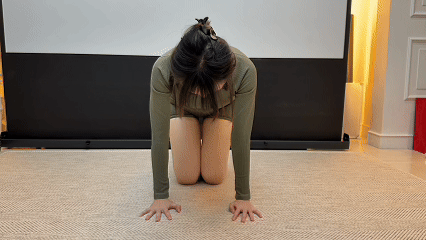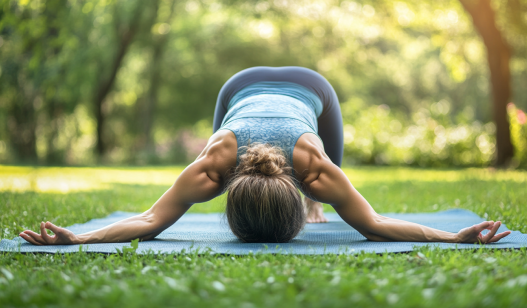For many of us, sleep is one of the few things we can control in our busy lives. The only rule? Comfort. We all have our favorite sleep positions, whether it’s the “mountain pose,” “peaceful pose,” or even the quirky “head-squashed-by-pillow” style. The truth is, each of us has our own unique way of drifting off to sleep.
One popular choice? Lying with both arms raised above the head in a position that looks a bit like you’re surrendering. It may seem strange, but those who sleep like this say it’s incredibly comfortable. The arms, which often feel cramped when lying by your sides, finally get relief when raised above your head. The moment you stretch them out, it feels like an instant wave of comfort washing over you. “Ah, that’s the spot!”
But before you get too cozy in your “surrender sleep” position, here’s something to think about: while it feels good for the moment, it might be doing more harm than good in the long run.
The Hidden Harm of the “Surrender Sleep” Position
Poor Posture During the Day: The Root Cause
In today’s world, many of us spend hours hunched over desks or looking down at screens, which leads to bad posture like slouching and rounded shoulders. This compresses the chest and reduces the space between ribs, making it harder to take deep breaths.
You’ve probably felt it yourself—sitting at your desk for too long and suddenly finding it hard to breathe. It’s not just in your head. Your chest is actually being compressed, making it harder to fill your lungs. But when you raise your arms overhead, it opens up the ribcage and gives your lungs more space to breathe. It’s like a quick breath of fresh air.

On top of that, raising your arms while lying flat on your back helps relax the “trapezius” muscles, which work overtime during the day. Whether you’re typing, carrying a heavy bag, or sitting in a tense position for hours, your trapezius bears the brunt. By lying flat with your arms above your head, it’s like your trapezius muscles get a “vacation” from their daily grind.
While the “surrender sleep” position feels great in the moment, there’s a catch: this relief is only temporary.
When the “Surrender Sleep” Position Becomes a Long-Term Issue
Have you ever woken up with your arms numb after sleeping with them raised above your head for too long? That tingling sensation is your nerves telling you they don’t like the position you’re in.
Nerves need both space and oxygen to function properly, but raising your arms overhead puts pressure on the nerves running down your arms and into your hands. This not only restricts blood flow but also reduces oxygen supply to your nerves, causing the tingling sensation. It’s your body’s way of warning you: “Lower your arms!”

Prolonged compression of the nerves from sleeping in this position can lead to chronic issues like nerve damage and muscle imbalances. Research from 2022 found that people who regularly sleep in the “surrender position” have a higher risk of “joint degeneration”, especially in the shoulder joints. The same study found that the risk of degeneration in the shoulder joint (acromioclavicular joint) was significantly higher for those who raised their arms during sleep.
Other studies show that holding your arms overhead increases pressure on the shoulder joints, which can lead to a variety of issues over time, including damage to the “thoracic spine”. When you stretch your arms above your head during sleep, your chest is forced to “push forward,” which alters the natural curve of your thoracic spine. Over time, this can lead to permanent spinal misalignment and discomfort.

So while the “surrender sleep” position may be comfortable for a short time, it’s not an ideal position for long-term sleep.
The Ideal Sleep Position: Flat on Your Back
For most people, sleeping flat on your back is the best option. This position helps maintain proper “spinal alignment”, which keeps your body in a neutral position. By distributing your weight evenly across your spine, it reduces the risk of muscle strain and helps relax your back and neck muscles. For people with back or neck pain, this is especially beneficial.
Moreover, lying on your back reduces the pressure on the shoulder joints compared to side or stomach sleeping.
But some of you may be thinking, “I wish I could sleep on my back, but my arms just won’t stay there!”

3 Pre-Sleep Stretches to Stop Your Arms from Rising
The reason your arms tend to rise during sleep is due to muscle tension in the shoulders and neck. We’ve compiled three simple stretches that can help release that tension and keep your arms where they belong while you sleep:
1.Chest and Scapular Stretch
- Bend one arm and open it behind you to feel a stretch near your armpit. Use your other hand to gently press on the chest muscles near the armpit, massaging in circular motions.
- While doing this, engage the muscles around your scapula to slowly move your arm up and down.
- Perform this stretch for 3 minutes on each side.

2.Prone Kneeling Breathing Stretch
- Place a firm pillow between your abdomen and thighs and relax into a kneeling position, letting your chest rest on the pillow.
- Extend your arms towards the ceiling and let your shoulders relax.
- Close your eyes and take slow, deep breaths, feeling the muscles in your back expand with each inhale. Hold this stretch for 3 minutes.

3.Kneeling Thoracic Rotation Stretch
- Kneel with your knees together and place your arms in front of you.
- Extend one arm towards the opposite side of your body, feeling the stretch along your spine.
- Hold the stretch for 5-10 seconds and take a few deep breaths before returning to the starting position. Repeat 10 times on each side.

By integrating these stretches into your routine, you can prevent the uncomfortable habit of raising your arms during sleep and improve overall posture and relaxation.



















